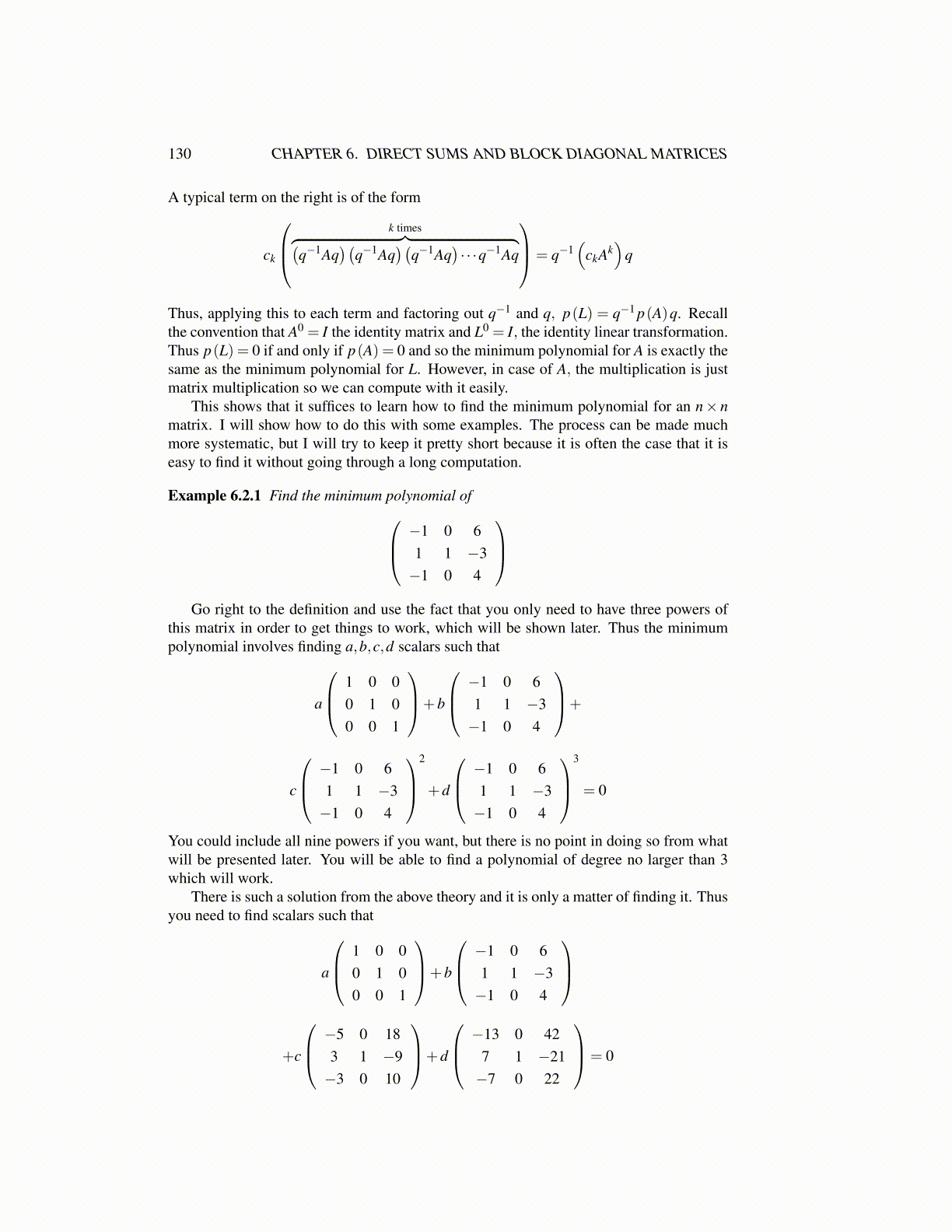
130 CHAPTER 6. DIRECT SUMS AND BLOCK DIAGONAL MATRICES
A typical term on the right is of the form
ck
k times︷ ︸︸ ︷(
q−1Aq)(
q−1Aq)(
q−1Aq)· · ·q−1Aq
= q−1(
ckAk)
q
Thus, applying this to each term and factoring out q−1 and q, p(L) = q−1 p(A)q. Recallthe convention that A0 = I the identity matrix and L0 = I, the identity linear transformation.Thus p(L) = 0 if and only if p(A) = 0 and so the minimum polynomial for A is exactly thesame as the minimum polynomial for L. However, in case of A, the multiplication is justmatrix multiplication so we can compute with it easily.
This shows that it suffices to learn how to find the minimum polynomial for an n× nmatrix. I will show how to do this with some examples. The process can be made muchmore systematic, but I will try to keep it pretty short because it is often the case that it iseasy to find it without going through a long computation.
Example 6.2.1 Find the minimum polynomial of −1 0 61 1 −3−1 0 4
Go right to the definition and use the fact that you only need to have three powers of
this matrix in order to get things to work, which will be shown later. Thus the minimumpolynomial involves finding a,b,c,d scalars such that
a
1 0 00 1 00 0 1
+b
−1 0 61 1 −3−1 0 4
+
c
−1 0 61 1 −3−1 0 4
2
+d
−1 0 61 1 −3−1 0 4
3
= 0
You could include all nine powers if you want, but there is no point in doing so from whatwill be presented later. You will be able to find a polynomial of degree no larger than 3which will work.
There is such a solution from the above theory and it is only a matter of finding it. Thusyou need to find scalars such that
a
1 0 00 1 00 0 1
+b
−1 0 61 1 −3−1 0 4
+c
−5 0 183 1 −9−3 0 10
+d
−13 0 427 1 −21−7 0 22
= 0